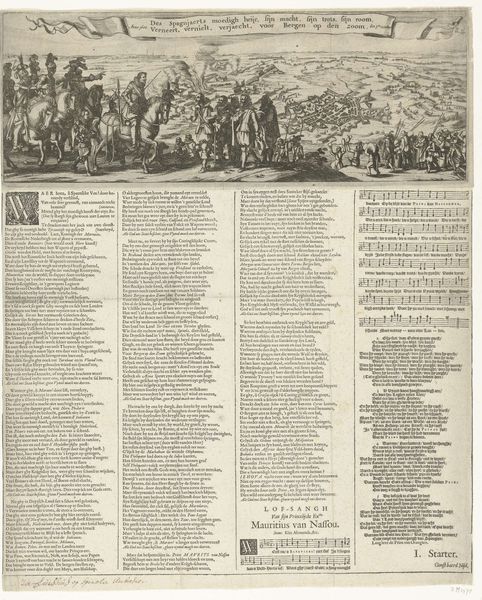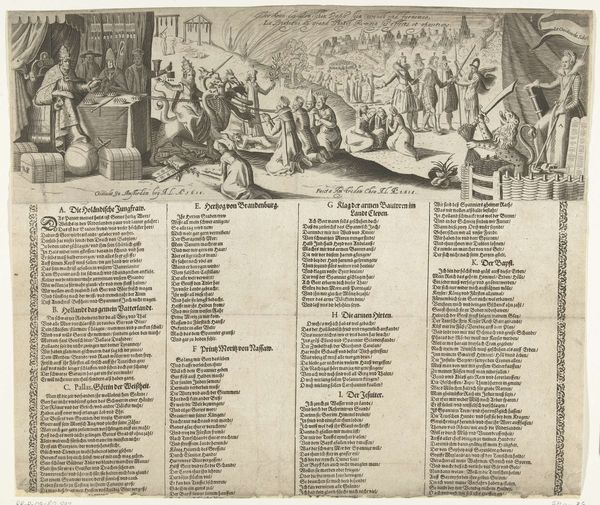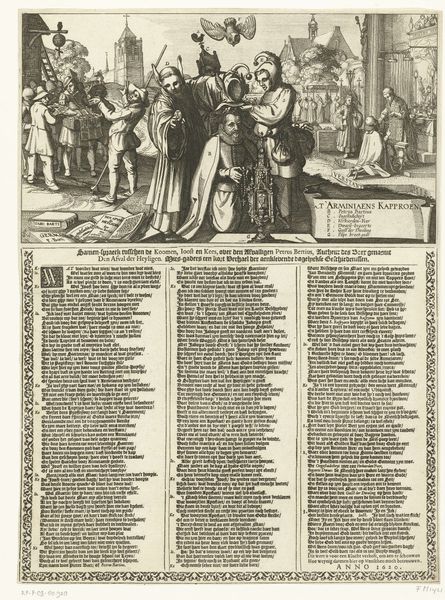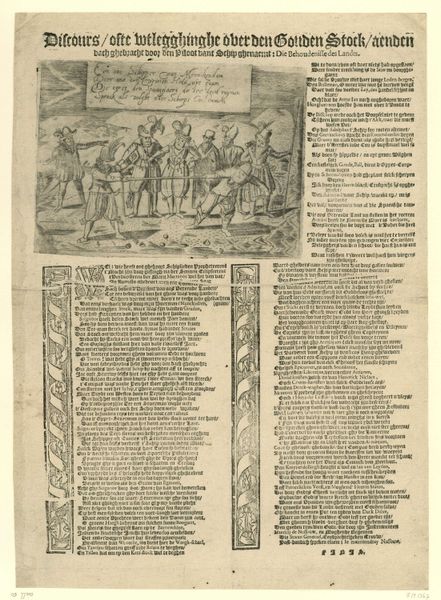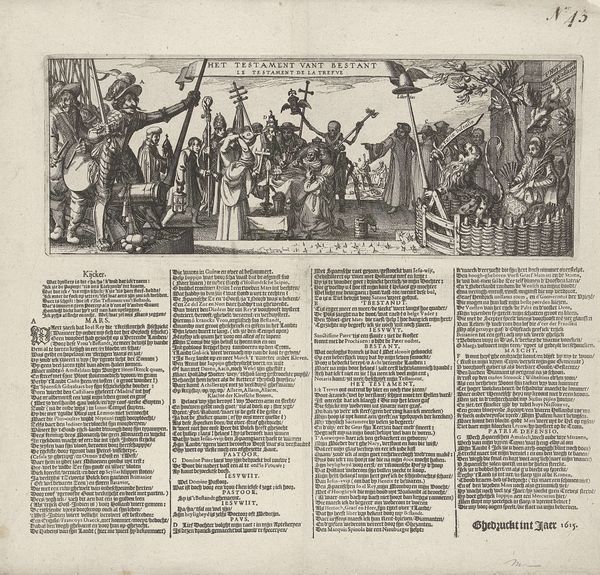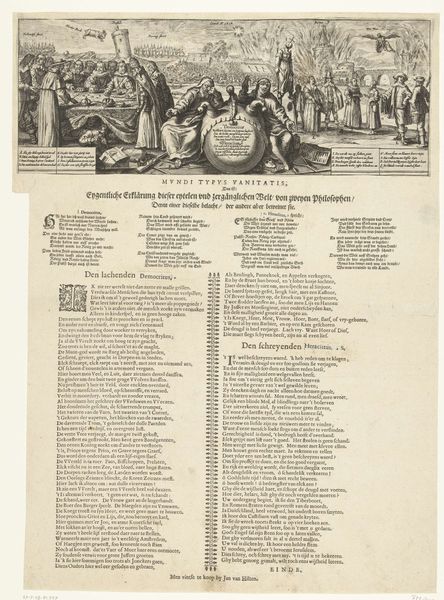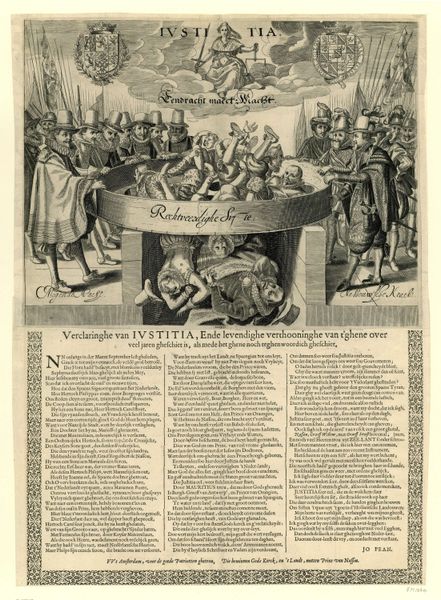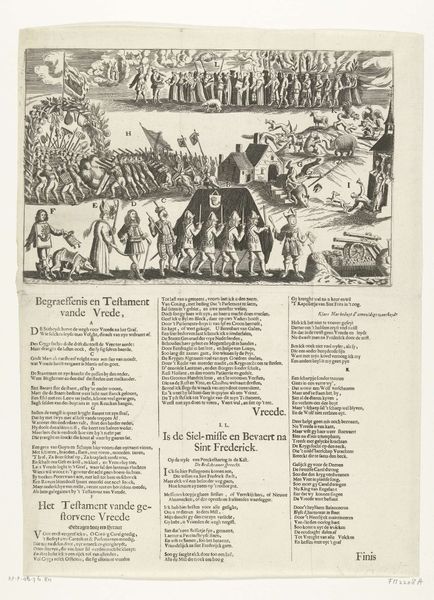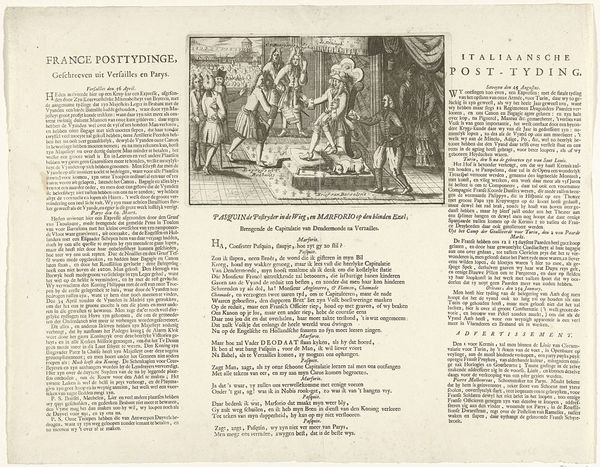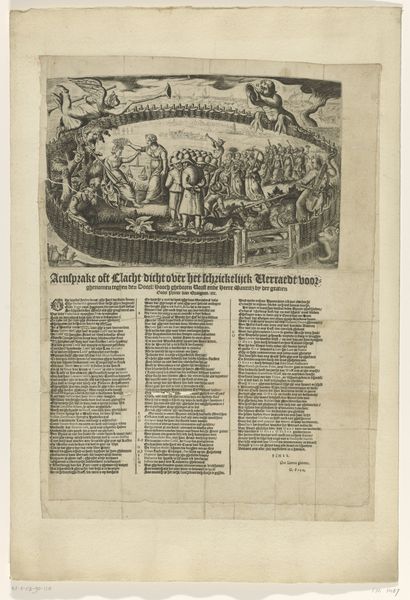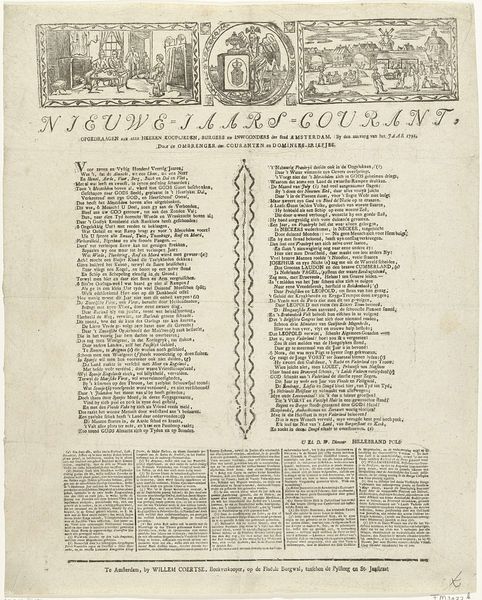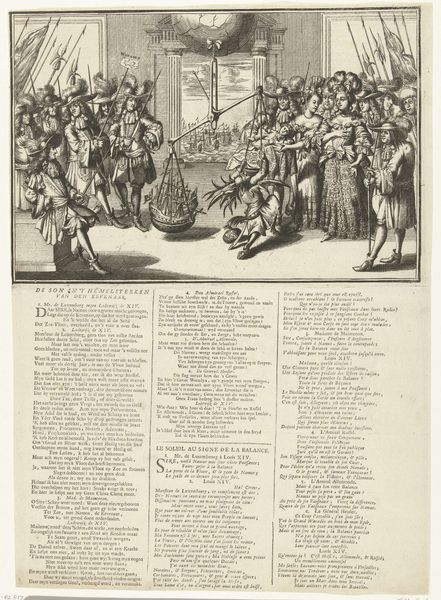
print, intaglio, engraving
#
narrative-art
#
baroque
# print
#
intaglio
#
history-painting
#
engraving
Dimensions: height 493 mm, width 472 mm
Copyright: Rijks Museum: Open Domain
This engraving, “De winkel van de paus van Rome”, or "The shop of the Pope of Rome," was created around 1615 by an anonymous artist. It's printed on paper, a relatively new and efficient means of distributing images and information at the time. Engraving is an incisive process; the artist would have used a tool called a burin to cut lines directly into a metal plate. Ink is then applied to the plate, and the surface wiped clean, leaving ink only in the incised lines. Paper is pressed against the plate, transferring the image. The crisp lines and graphic quality of the print lend themselves well to the satirical subject matter. The image critiques the Catholic Church and its practices, portraying it as a marketplace of indulgences and corruption. The choice of printmaking as a medium is significant. It allowed for mass production and dissemination of this critique, reaching a wide audience and fueling the religious and political debates of the era. The relatively low cost of the print also makes it accessible to a broad audience, marking a distinct departure from traditional art.
Comments
No comments
Be the first to comment and join the conversation on the ultimate creative platform.
